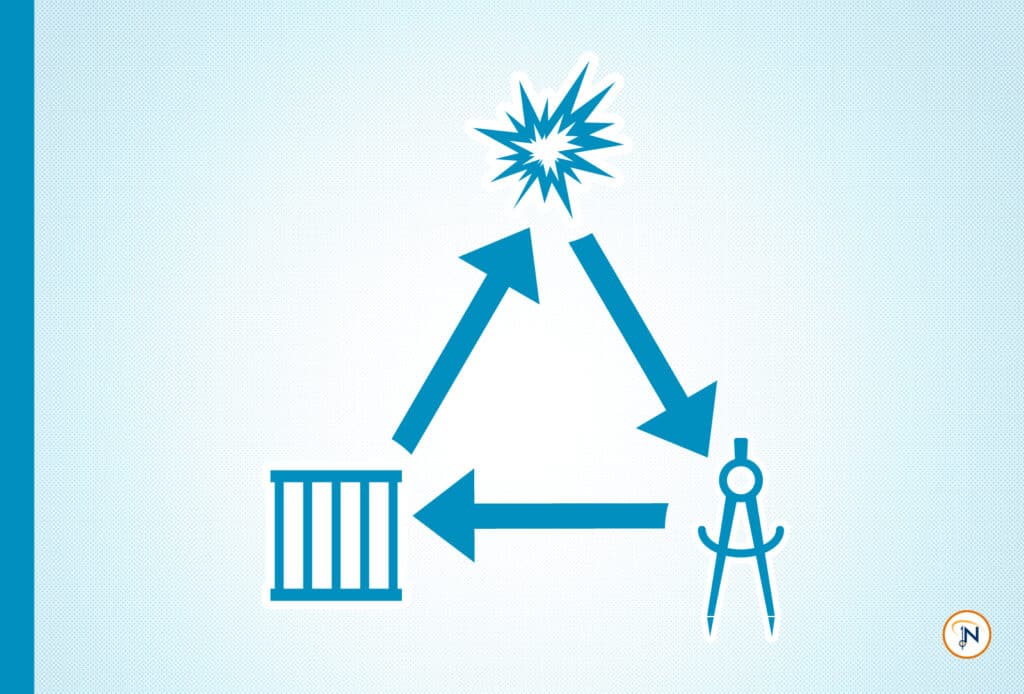Reducing recidivism is one of the most important things we can do as supervision professionals. It’s also one of the hardest.
Part of what makes recidivism so difficult to tackle is that successes and failures happen on the individual level, therefore recidivism reduction can only truly happen when agencies commit to systemic change. Everything we do, from policy decisions to individual supervision levels and interventions, should be based on risk and criminogenic needs.
There’s no definitive roadmap to systemic change, but there are a few steps your agency can take to start improving recidivism rates in your community:
1. Agree on a definition of recidivism.
You can’t measure what you haven’t defined. While there is no single definition of recidivism, the Bureau of Justice Statistics recommends that all definitions contain three key elements:
- The starting point. This is typically a release date (agencies vary on whether they use release from incarceration, release from probation, or even release from a program, as is the case in many specialty courts) or date of intake/assessment.
- The failure. This is where “criminal behavior” comes in. An arrest constitutes a failure in many cases, but in others, a conviction or return to prison is required.
- The time frame. For consistent measurement, it’s important to specify the time frame between the starting point and the failure for an action to count as recidivism. In most cases, the time frame agencies use is two to three years.
Example: A person serves a three-year prison sentence and is released. Five years later, they’re arrested for a similar crime. Does this count as recidivism?
The starting point is release from incarceration, the failure is re-arrest, and the time frame is five years. For some agencies, this may be considered recidivism, but five years is outside the prescribed time frame.
2. Use a risk/needs assessment to address criminogenic needs.
Being proactive is key to offender success. Recidivism is predictable, and substantial empirical research indicates some criminogenic needs are more influential in crime reduction. The next step is to know how to address them in a manner that elicits positive behavior change.
By using a validated risk/needs assessment for every client at several points in their supervision journey, you can help ensure critical needs are met and appropriate interventions are in place. Assessment results should guide supervision, programming, case plans, incentives, sanctions and resources, as well as inform policy and procedure.
3. Measure results.
Once you have a definition of recidivism and you’re proactively working with clients to reduce it, you need to measure progress. It helps to have an electronic case management system to capture key data points in a way that’s consistent and easily reportable.
Gathering apples-to-apples data is key – if different people throughout the supervision process or in different parts of your agency aren’t using the same terminology and collecting the same data points, it will be difficult-to-impossible to determine progress toward goals. Get everyone on the same technology system, put processes in place to ensure the right data is captured, and run reports regularly to measure progress.
4. Rinse, and repeat.
Reducing recidivism is an ongoing process. Systemic change is slow. You’ve defined the goal, you’re proactively working toward it, and you’re measuring your progress. But the journey doesn’t end there.
Take some time to learn from your progress. In what areas are you moving the needle? What are your ongoing or escalating challenges? How can you better address client risks and needs?
The process is cyclical: Address risks, measure progress, learn from the past, tweak the approach, measure it again, and keep learning. Always keep learning.
No matter which stage of the process you’re in, we can help. Our staff of seasoned practitioners have assisted many agencies nationwide, at the state, local and judicial levels to refine and create practice and procedures that ensure we all keep progressing in th right direction. Reducing recidivism isn’t easy, but it’s the foundation to keeping communities safe, and we’re right there with you. Whether you need technology solutions or advice from experienced professionals, contact us today.






